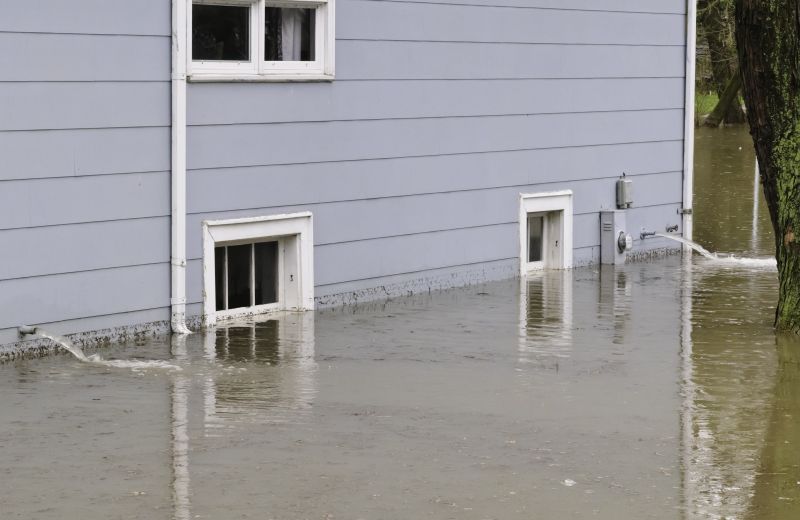Leading Equipment For Storm Damage Recovery Efforts
Utilize specialized products crafted to support quick, safe, and thorough restoration following severe storm impacts.
 Living in Clearwater, FL, residents are no strangers to the challenges posed by storm events, including hurricanes, heavy rain, and strong winds. Proper storm restoration products are essential for safeguarding property and ensuring quick recovery after severe weather. These products serve various functions, from protecting roofs and windows to reinforcing structural elements and managing water intrusion. Selecting the right tools and materials can make a significant difference in minimizing damage and facilitating repairs.
Living in Clearwater, FL, residents are no strangers to the challenges posed by storm events, including hurricanes, heavy rain, and strong winds. Proper storm restoration products are essential for safeguarding property and ensuring quick recovery after severe weather. These products serve various functions, from protecting roofs and windows to reinforcing structural elements and managing water intrusion. Selecting the right tools and materials can make a significant difference in minimizing damage and facilitating repairs.
Top Overall Option
Heavy-Duty Weatherproofing Sealant
A versatile, high-performance sealant designed to provide a reliable barrier against water intrusion and wind-driven elements. Suitable for sealing roof penetrations, windows, doors, and other vulnerable areas, this product offers durability and ease of application. Its flexible formulation adapts to building movements, helping to maintain a tight seal during storm conditions.
Types of Products For Storm Restorations
Impact-Resistant Windows
Designed to withstand high winds and debris, impact-resistant windows help protect interiors during storms.
Roof Coverings and Shingles
Heavy-duty roofing materials that resist tearing and uplift, providing enhanced protection for roofs.
Storm-Ready Doors
Reinforced doors with sturdy frames and impact-resistant panels to prevent breach during severe weather.
Waterproof Sealants and Caulks
Sealants formulated to prevent water penetration around windows, doors, and roof penetrations.
Temporary Tarps and Coverings
Heavy-duty tarps designed for quick deployment to cover damaged areas and prevent further water intrusion.
Structural Reinforcement Braces
Metal or composite braces used to reinforce vulnerable structures like garage doors and walls.
Storm Drainage and Water Management Systems
Products such as sump pumps and drainage mats to manage excess water and prevent flooding.
Portable Generators
Reliable power sources to maintain essential functions during outages caused by storms.
Emergency Lighting and Power Supplies
Lighting solutions and backup power options to ensure safety and visibility during storm aftermath.
Flood Barriers and Sandbags
Physical barriers to divert floodwaters and protect property entrances.
Storm Shutters
Removable or permanent shutters that provide additional protection for windows and glass doors.
Venting and Exhaust Covers
Protective covers for vents and exhaust openings to prevent debris and water entry.
Fire-Resistant Building Materials
Materials designed to resist fire ignition and spread during storm-related incidents.
Roof Vents and Exhausts
Properly sealed vents to prevent water ingress while maintaining ventilation.
Insulation and Weather Barriers
Materials that improve thermal insulation and act as barriers against moisture and air leaks.
Popular Choices
Widely used for their ability to withstand storm debris impact.
Commonly chosen for their durability and wind resistance properties.
Popular for their reinforced construction and added security during storms.
Frequently used to seal gaps and prevent water intrusion around vulnerable areas.
Often employed for temporary coverage of damaged roofs or walls.
Chosen for their effectiveness in flood-prone areas.
A common backup power solution during storm-related outages.
Popular for easy installation and added window protection.
Frequently used to remove water from basements or low-lying areas.
Selected for their reinforced frames and panels.
Commonly installed to prevent water and debris entry.
Popular for quick fixes and sealing small gaps.
Chosen to improve ventilation while maintaining protection.
Frequently used to maintain visibility during power outages.
A traditional option for flood prevention.
Effective storm restoration begins with understanding the range of products available. From durable roofing materials designed to withstand high winds to specialized sealants that prevent water infiltration, there are numerous options tailored to different needs. Emergency preparedness supplies, such as portable generators and temporary barriers, also play a crucial role during and after storm events. Investing in quality products can help homeowners and contractors respond more efficiently, reducing long-term repair costs.
In addition to durability, ease of installation and compatibility with existing structures are important considerations. Many products are designed for quick application, which is vital during emergency situations. Proper assessment of individual property needs and local storm risks can guide the selection process, ensuring that the chosen solutions are appropriate and effective. Consulting with local experts or suppliers can provide valuable insights specific to Clearwater's unique climate and storm patterns.
Overall, a comprehensive approach that combines protective materials, emergency supplies, and maintenance tools can enhance resilience against storms. While no product can guarantee complete protection, careful selection and proper usage can significantly improve a property’s ability to withstand and recover from storm-related impacts.
Key Buying Considerations
- Assess the specific storm risks in your area to select appropriate products.
- Ensure compatibility with existing structures and materials.
- Prioritize products with high durability and resistance to wind and water.
- Consider ease of installation, especially for emergency or temporary solutions.
- Check for compliance with local building codes and safety standards.
- Evaluate the long-term maintenance requirements of the products.
- Determine if the product provides adequate protection for your property's vulnerabilities.
- Look for products designed for quick deployment during emergencies.
- Consider the size and coverage area needed for your property.
- Review customer feedback and product ratings for real-world performance insights.
- Factor in the availability of replacement parts or accessories.
- Think about the overall cost versus the level of protection offered.
- Verify the product’s resistance to environmental factors like corrosion or UV exposure.
- Choose products that are suitable for both temporary and permanent installation.
- Consult local experts or suppliers for tailored recommendations.
